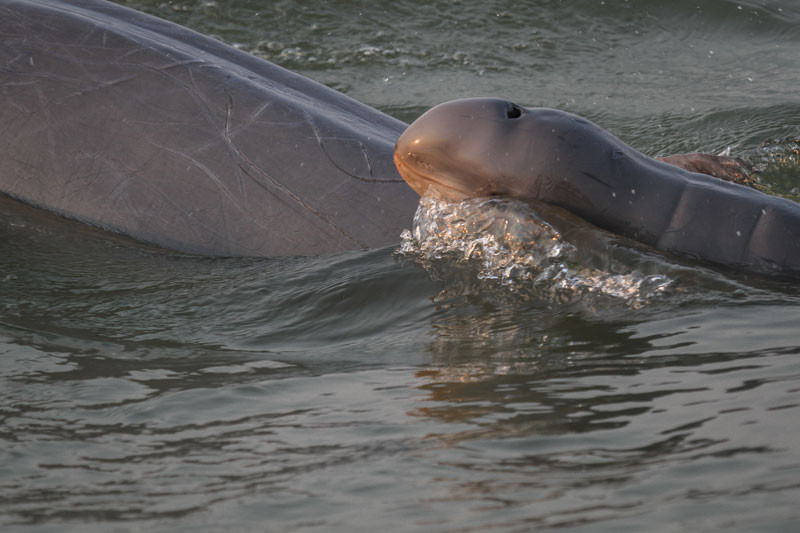The rate at which the population of Irrawaddy dolphins in the Mekong River is declining has dropped dramatically in recent years, although more dolphins must be protected into adulthood to save the species from extinction, according to a new report released Tuesday.
There are an estimated 80 Irrawaddy dolphins in existence, the population having shrunk at an average rate of 1.6 percent per year over the past eight years, according to the report, which was released jointly by the Fisheries Administration and the World Wildlife Fund (WWF).

In 2007, the endangered mammal was disappearing at a rate of 7 percent per year.
Recruitment—the number of dolphins that survive into adulthood —is currently estimated to be at 0.8 percent, compared to zero prior to 2013, the report says.
“The increase [in the] ongoing recruitment rate gives hope of recovery if the levels of mortality can be reversed,” it says.
“However whilst there is clear evidence of the continued decline of the population of dolphin hope of recovery remains: recruitment is evident. If mortality rate can be arrested, the population will stabilize and recover in the long term.”
In a press release, the WWF credited the slow in the dolphins’ decline to its work with the Fisheries Administration in protecting the dolphins’ habitat and intercepting fishermen in the species’ protected zones.
WWF country director Chhith Sam Ath said his organization had increased monitoring of the administration’s river guards this year to ensure they were on the lookout for illegal activity.
“The core work we’ve done is to work with law enforcement,” he said. “We have law enforcement advisers to join them on patrol and monitor them.”
Mok Ponlok, deputy chief of the Fisheries Administration cantonment in Kratie province, where most of the Irrawaddy dolphins live, attributed the reduced mortality rate to increased patrols, better equipment and community education about fishing laws.
This year, he said, “We began to patrol at night. We also disseminate information and educate people. We now have things like gasoline and equipment for patrols,” he said.